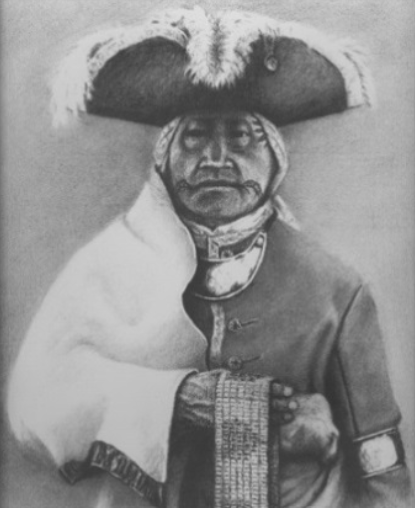The Jumonville Affair"I fortunately escaped without any wound, for the right wing, where I stood was exposed to and received all the enemy's fire, and it was the part where the man was killed, and the rest wounded. I heard the bullets whistle, and, believe me, there is something charming in the sound." ~ George Washington 
Fred Threlfell PreludeIn 1753, French soldiers began building forts from Lake Erie southwards toward the forks of the Ohio River. George Washington was sent to the Ohio country as a British emissary in the winter of 1753-54 to tell the French to leave. French officers told Washington that they were not obliged to obey his summons, and they were going to stay. Washington returned to Virginia and informed Governor Robert Dinwiddie of their refusal to leave. The SkirmishOn the stormy night of May 27, 1754, Washington and about 40 men beganan all-night march to confront the French and learn their intentions. They traveled through woods so dark the the men sometimes spent nearly a half hour just trying to find the trail. AftermathWashington now knew he was discovered. He sent his prisoners to Williamsburg, while he returned to Great Meadows. There he started construction of a small fortification to protect from a probable attack. About five weeks later, the attack came, as a larger force of French and Indians attacked Washington's force of 400, at his "Fort of Necessity". |
Last updated: May 20, 2024
